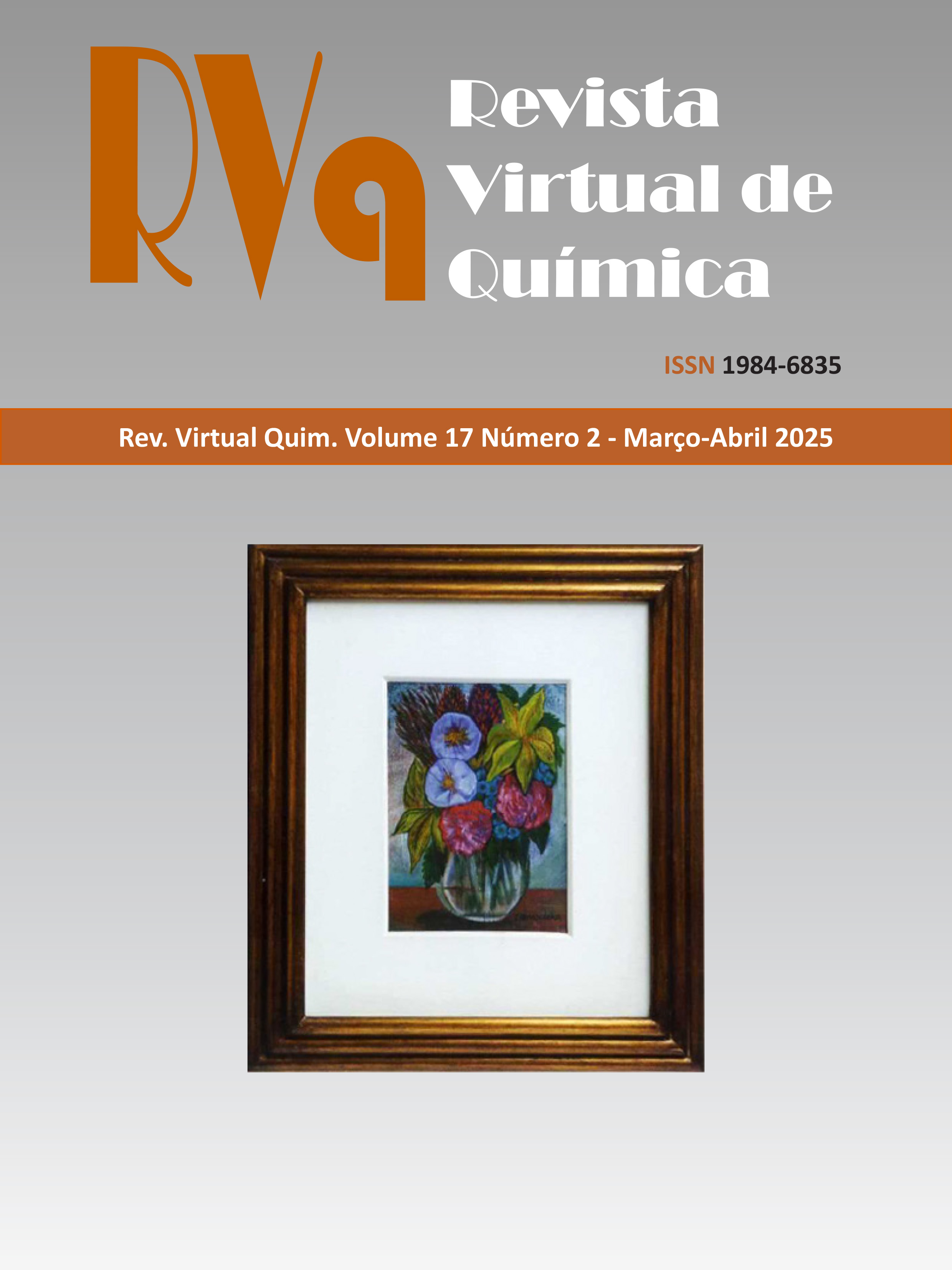Caracterização Química e Espectroscópica de Ácidos Húmicos Isolados de Solos de Veredas do Brasil Central
DOI:
https://doi.org/10.21577/1984-6835.20240056Resumo
Elemental analysis, total acidity and spectroscopic data (IF, UV-Vis and FTIR) were used to characterize
the humic acid of the surface layer of soils from veredas in central Brazil, located in areas with different
environmental conditions (V1 – vereda in conservation unit; V2 – vereda with agricultural use in the
surroundings; V3 – vereda cut by road; and V4 – vereda in urban area). Analysis of the structural
characteristics revealed differences between the HAs evaluated. HA-V1 had higher C contents and C/N
ratios, indicating greater structural and biological stability. The H/C ratio showed a higher proportion of
C in aromatic groups for HAs V1, V2 and V3, and a higher presence of C in aliphatic groups for HAs
V4. Among the acid functional groups, the different HAs had a greater number of phenolic groups than
carboxylic groups. High values of E4/E6 ratio were observed for HA-V4, compatible with its lower chemical
complexity revealed by IF and FTIR spectra. The HA from vereda soil belonging to an undisturbed
environment (V1) showed greater chemical evolution than those from anthropized environments (V2, V3
and V4). Among the different anthropic interventions in the surroundings of the veredas, land use with
urban constructions (V4) showed the least evolved HA.
Downloads
Publicado
Edição
Seção
Licença
Copyright (c) 2025 Revista Virtual de Química

Este trabalho está licenciado sob uma licença Creative Commons Attribution-NonCommercial-NoDerivatives 4.0 International License.
Autores que publicam nesta revista concordam com os seguintes termos:
Os direitos autorais para artigos publicados nesta revista são do autor, com direitos de primeira publicação para a revista. Em virtude do acesso público, os artigos são de uso gratuito em aplicações educacionais e não-comerciais desde que com reconhecimento da autoria e da publicação nesta revista.

